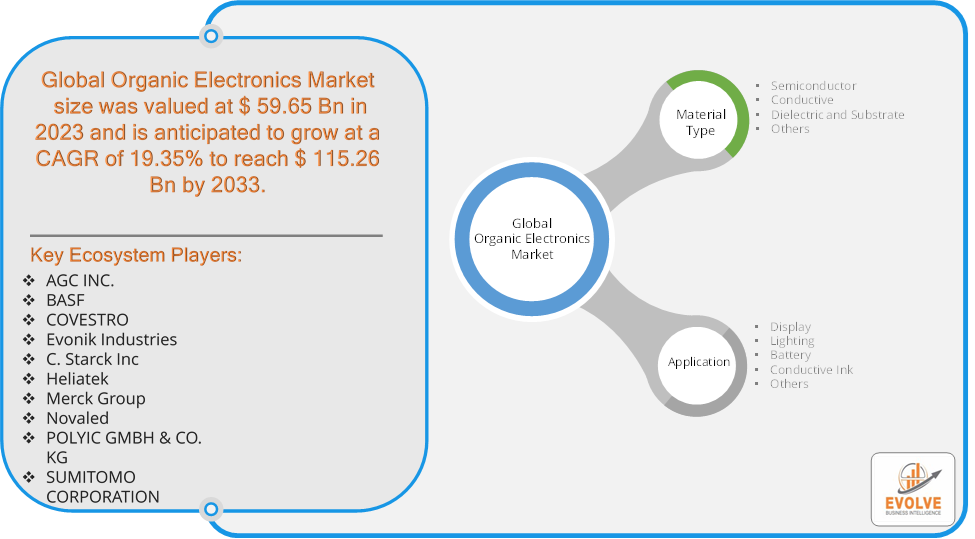Organic Electronics Market Surges: 19.35% CAGR

Evolve Business Intelligence has published a research report on the Global Organic Electronics Market, 2023–2033. The global Organic Electronics market is projected to exhibit a CAGR of around 19.35%during the forecast period of 2023 to 2033.
Evolve Business Intelligence has recognized the following companies as the key players in the global Organic Electronics Market: AGC INC., BASF, COVESTRO, Evonik Industries, C. Starck Inc, Heliatek, Merck Group, Novaled, POLYIC GMBH & CO. KG, SUMITOMO CORPORATION
 More Information: https://evolvebi.com/report/organic-electronics-market-analysis/
More Information: https://evolvebi.com/report/organic-electronics-market-analysis/
Market Highlights
The Global Organic Electronics market is projected to be valued at USD 59.65 Billion by 2033, recording a CAGR of around 19.35% during the forecast period. The Organic Electronics Market refers to the sector that deals with electronic devices made from organic (carbon-based) materials, including polymers and small molecules. Unlike traditional silicon-based electronics, organic electronics offer advantages such as flexibility, lightweight construction, and the potential for low-cost manufacturing. These materials are used in a variety of applications, including organic light-emitting diodes (OLEDs), organic photovoltaic cells (OPVs), and organic field-effect transistors (OFETs). The market is driven by the growing demand for flexible and wearable electronics, energy-efficient displays, and advancements in organic material science.
The COVID-19 pandemic has led to supply chain disruptions leading to supply shortages or lower demand in the organic electronics market. The travel restrictions and social-distancing measures have resulted in a sharp drop in consumer and business spending and this pattern is to continue for some time. The end-user trend and preferences have changed due to the pandemic and have resulted in manufacturers, developers, and service providers adopting various strategies to stabilize the company.
Segmental Analysis
The global Organic Electronics market has been segmented based on Material Type , Application
Based on Material Type , the market is segmented based on Semiconductor, Conductive, Dielectric and Substrate. the Semiconductor segment dominates, primarily due to its critical role in the performance and functionality of organic electronic devices, such as OLEDs and organic photovoltaics.
Based on Applications, the market has been divided into the Display, Lighting, Battery, Conductive Ink, Others. the Display segment dominates, driven by the widespread adoption of Organic Light-Emitting Diodes (OLEDs) in consumer electronics, particularly in smartphones, televisions, and wearable devices.
More Information: https://evolvebi.com/report/organic-electronics-market-analysis/
Regional Analysis
The Organic Electronics market is divided into five regions: North America, Europe, Asia-Pacific, South America, and the Middle East, &Africa. North America holds a dominant position in the Organic Electronics Market. In terms of growth, North America held a significant proportion of the market for organic electronics. The area has advanced technology, and its early adoption of cutting-edge innovations like artificial intelligence (AI), machine learning, and the internet of things (IoT) contributed to its rise. The Asia-Pacific region has indeed emerged as the fastest-growing market for the Organic Electronics industry. From 2023 to2032, the Asia-Pacific Organic Electronics Market is anticipated to expand at the fastest rate. This is because customers’ disposable money is increasing and the consumer electronics industry is consistently growing globally. Furthermore, the organic electronics market in China had the most market share, while the organic electronics market in India had the quickest rate of growth in the Asia-Pacific area.


